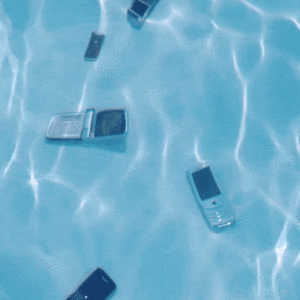 As the weather warms up, and people emerge from their Netflix-bingeing hibernations, it’s time to go outside! That means your devices will be going outside as well, exposing them to a variety of potential hazards, including water. Whether it’s rain, the ocean, your favorite fishing hole, or that cold beer you’re enjoying on a patio, keeping your device from exposure to liquid is a must.
As the weather warms up, and people emerge from their Netflix-bingeing hibernations, it’s time to go outside! That means your devices will be going outside as well, exposing them to a variety of potential hazards, including water. Whether it’s rain, the ocean, your favorite fishing hole, or that cold beer you’re enjoying on a patio, keeping your device from exposure to liquid is a must.
Here are some ways to waterproof your device (and some pros and cons to go along with them).
Waterproof Cases
Waterproof cases are very similar is size, shape, and function of a normal phone case, but provide waterproof capabilities.
Pros: Waterproof cases allow you to use your phone like you normally would: they provide you access to all the functions a normal case does. In addition to protecting your device from water, waterproof cases can also protect from dirt, sand, snow, food – you name it. Most waterproof cases are rated to a certain depth and a certain amount of time. In most cases of accidental submersion, a waterproof case will protect your phone (though it’s always good to check your case’s specific uses and limitations. Some brands don’t guarantee waterproofness, so make sure this is the case before buying).
Cons: While waterproof cases do let you use your phone like you normally would, they do have to fully cover your device. Because of this, they can make some of the finer gestures of a smartphone harder to recognize, and can make your voice harder to hear. Waterproof cases also don’t last forever. As they wear out, the waterproof capabilities of the case may fail over time, so it’s always good to check for cracks and leaks.
Waterproof pouches and dry bags
Waterproof pouches and dry bags are exactly what they sound like. They don’t enclose a device like a case, but are instead a waterproof bag you can keep your phone or device. Think a more sophisticated Ziploc bag.
Pros: If you prefer to go case-free most days, or don’t expose your device to water very often, you can protect your phone in and around water with a waterproof pouch or dry bag. Compared to a waterproof case (which can run you $40 to $100), they are much more affordable. Many pouches and dry bags float, and are rated for depths deeper than many waterproof cases, making them great for people who enjoy watersports.
Cons: Waterproof pouches and dry bags don’t come with the same drop or shock protection as a case, and they can be much bulkier. While many allow for you to use the touchscreen while in use, they aren’t as seamless as a case might be. Make sure you check for the submersion depth/time the bag or pouch is rated for – some products don’t disclose this information.
Waterproof and Water-Resistant Devices
Are you accident-prone? Do you drop your device all the time? Have you tried to save your soggy device in a bowl of rice more than once? Maybe it’s a good idea to switch to a waterproof or water-resistant device.
Many new phones and devices are much more water resistant that they used to be. The newest line of iPhones, for example, can survive submersion in 3 to 5 feet of water (depending on the model) for up to 30 minutes. These devices will come with a rating: IP67 or IP68. This rating will tell you how long and how deep the device can survive in the water.
Pros: No case necessary, so devices function like normal. You can apply one of the above methods for extra waterproofing.
Cons: While water-resistant, many devices can’t survive long in the water. Also, keep your water-resistant device away from the ocean. Many of the coatings used to achieve water protection don’t do as well with saltwater. These coatings are meant for accidental water contact, so use under water isn’t recommended (using buttons, for example, expose your device to damage).
And what happens if your device loses the battle with water? That’s why we’re here! If all else fails, we can help you fix that water-logged device. Learn more about our local services.



